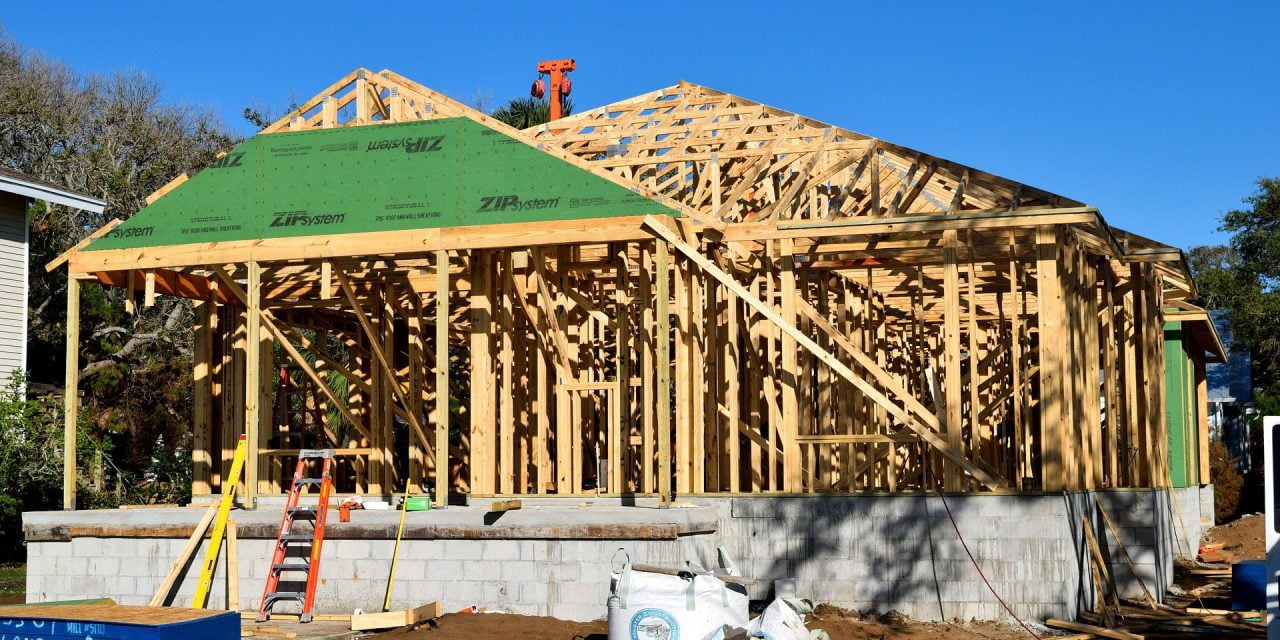The price for lumber reached historic levels this year, accelerated by supply shortages and increased demand.
While prices rose, builder sentiment for newly constructed single family residential (SFR) homes has continued a downward tumble since May 2021.
Back in April 2020, builder sentiment plummeted into negative territory due to the shocks from the COVID-19 pandemic and 2020 recession as historic job losses blighted the nation. Then, builder sentiment began to climb steadily throughout the latter half of 2020, peaking in November. As of August 2021, national builder sentiment is comparatively lower to the start of the year, but slightly higher than July 2020, according to the National Association of Home Builders (NAHB).
Confidence is slipping because of heightened costs for building materials, thus increasing the price of newly constructed homes. Homebuyers are weary to purchase at these steadily increasing prices, at times even pulling out of contracts upon realization that construction costs have increased beyond their budget since their initial purchase.
In May 2021, lumber prices peaked at $1,600 per 1,000 board feet, representing a 300% increase from the year before. However, the cost for lumber has since fallen back. Softwood lumber decreased 29.0% in July, which was the largest monthly decline on record since tracking began in 1947, according to the NAHB. For perspective, this steep decline still leaves lumber prices higher than at any other point before 2021.
While declining lumber prices are helping builders contend with the volatile new home market, the ups and downs of the past year leave builders nervous of what’s to come.
Related article:
What’s behind the lumber shortage
Initiating the drop in lumber prices was a change in supply and demand, the same factors that drove prices up in the first place.
During the early stages of the pandemic, a disruption in the supply chain occurred as production and manufacturing slowed in both the U.S. and Canada, where much of the softwood lumber used in the U.S. is sourced. Then, a huge uptick in demand for lumber swept the nation.
The surge in lumber demand stemmed from:
- historically low interest rates, motivating buyers to take out mortgages for new homes;
- younger generations who were able to keep working were able to grow their savings, allowing them to become first-time homebuyers; and
- increased home improvement projects.
Now, these factors are playing out in reverse, evidenced by:
- slightly higher mortgage interest rates;
- the movement from urban to suburban areas settling; and
- home improvements being completed or replaced by other activities like taking vacations.
While demand has come down, supply has also picked up. U.S. production of wood product is back up to production output akin to 2019 levels, according to the Board of Governors of the Federal Reserve System. Thus, the balance between supply and demand is returning.
The volatility of lumber pricing has the greatest impact in the residential market. The average cost of a new home has gone up $36,000 due to higher lumber costs alone, according to the NAHB. The premium on new homes already causes new construction to be more expensive than resale homes, so it’s no surprise that many homebuyers are finding themselves priced out of new homes.
Builders lose confidence and watch the housing market carefully
Despite the more favorable conditions for builders both in terms of supply and demand, several factors remain that keep them cautious in 2021.
For one, social distancing measures and stricter credit limits affect builder productivity. But most significantly, the record job losses during the 2020 recession combined with the expirations of the federal eviction and foreclosure moratoriums have made builders watchful and cautious. When evictions and foreclosures resume, vacancies will rise.
The rise in the number of local vacancies will drag home prices down, likely in 2022. The number of newly built SFR homes will remain low in 2021-2022.
The next peak in new SFR home construction will likely occur during 2024-2025 as the economic recovery stabilizes with the return of jobs.
While it’s currently unclear whether we will ever return to pre-pandemic prices for lumber, firsttuesday forecasts that the housing market will be characterized by an imbalance between supply and demand until the economic recovery begins in earnest, likely around 2024-2025. Expect the volatile forces of supply and demand to continue affecting lumber prices for the next two-to-three years.
Related article:
Construction obstacles cut out low- and mid-income Californians from homeownership














